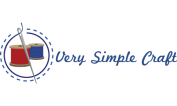Making quilts require much time and patience, perhaps even more so when you are just starting to learn how to quilt. But don’t fret! This guide will let you know about the basic steps in quilting as well as some useful tips and quilting project ideas.
A lot of people enjoy quilting and being able to make their own garments, blankets, and accessories. I made this guide for those who are interested in quilting, but don’t know how to start.
Best Sewing Machines for Quilting
Before you even quilt, you should make sure your sewing machine is the right model for quilting. To determine that, there are some factors you’ll need to consider such as the sewing machine’s size and features.
The sewing machine should be big enough and, ideally, come with a table to account for the quilt you’re making. You’re going to have a hard time guiding and moving the quilt around with a small machine.
Heavy duty sewing machines are recommended— your machine should weigh at least 10 pounds. Otherwise, you’ll have a hard time quilting with all the shaking.
Additionally, since you’ll be needing a lot of thread to make a quilt, choose a machine with a bobbin case that can hold larger bobbins. Since larger bobbins can hold more thread, you won’t have to replace it as often.
Basic Quilting Supplies
For quilts, you will need 100% cotton fabric. There are other options such as special quilting fabric and quilting linen, but most of these are just variations made of the same or similar cotton material as regular cotton fabric.
For cutting tools, you will need some scissors for cutting the thread, and a rotary cutter for fabric. Rotary cutters allow you to cut fabric easily and with accuracy, which makes it convenient when you’re using quilt patterns.
Then, when it comes to thread, always use 100% cotton. This is because regular thread may be too “strong” and cut through your cotton quilts.
You will also need the batting, the soft and thick material that is sandwiched between the front and back quilts. There are different types of batting, but it’s recommended that beginners use cotton batting.
Other things you need include rulers to cut the fabric easier, a cutting mat, iron to set your quilts, pins and safety pins to hold the fabric in place, and a seam ripper just in case you make a mistake.
Steps in Quilting
Quilts have three basic layers: the front fabric, the batting, and the back fabric. Online quilting calculatorscan help you determine the amount of fabric you need based on how many rows and columns you want your quilt to have.
Once you’ve got your fabric measurements, start by ironing the front and back fabric. This will make it easier to cut and will remove any wrinkles.
The fabric squares will be sewn together with a ¼ seam allowance, so if you want a quilt made of 5-inch squares, cut them as 5 ½ x 5 ½ squares.
Then, lay down the squares side by side in the way you want your quilt to look like. When you’re satisfied with the design, stack up the rows in order. You can use a sticky note to help you remember.
Now to start with the first row: place the squares on top of each other with the patterned sides facing. Sew the edges together with a ¼ seam allowance. Add another square, and repeat this process until you have a full row.
Once you’ve made all your rows, sew them together using the same method as before. Now you’re done with the front part of the quilt.
It’s time to cut the batting and back piece of your quilt! They should be bigger than the front of your quilt by at least 2 inches.
After cutting the other layers, it’s time to baste the quilt. Pin the batting and the back fabric to the front fabric, or use a basting adhesive.
The final step is to sew the layers together. I recommend starting at the center and working your way out to prevent bunching of fabric. Sewing on or near the stitches you’ve already made will make the process easier.
Quilting Tips
Using a cutting mat and ruler will help you get more accurate cuttings. You can also prewash your fabric to shrink it and rinse out any dirt and excess dye.
Additionally, you can make a quilt binding for your quilt. The binding borders the quilt and gives it a neater finish. It also protects the seams.
Quilting Ideas
You can use quilting to make curtains, blankets, clothes, and even accessories. There are also quilting projects at a much smaller scale such as dolls, purses, and towels.
People find happiness in quilting. Though it can be a long process, once it’s finished, it can be very satisfying. It may be well out of your comfort zone, but it can be very rewarding once you’ve tried for yourself.
I hope this guide was helpful to you. Share what you think in the comments below and show it to your friends if you enjoyed the tutorial!

Hi, I am Ashley. I am the editor at VerySimpleCraft.com. I enjoy making things and exploring new ideas. I feel blessed to have the opportunity to share my love of crafts with you.
